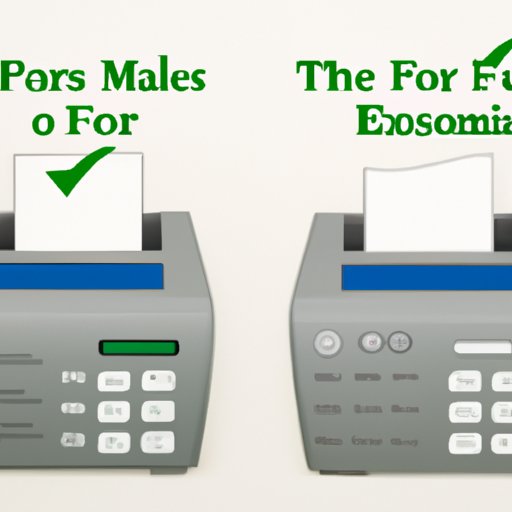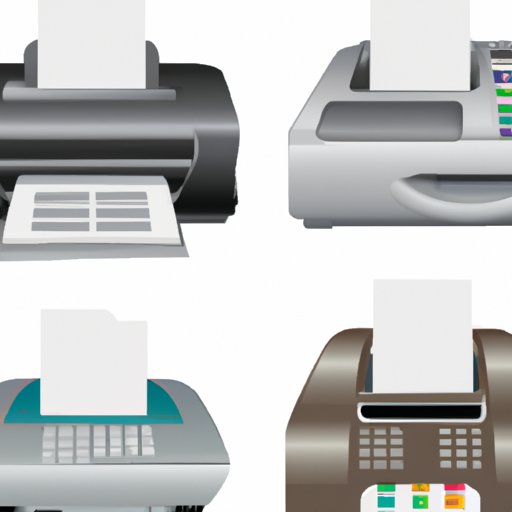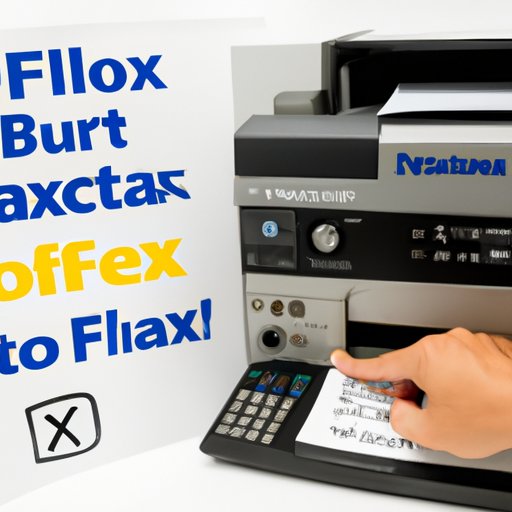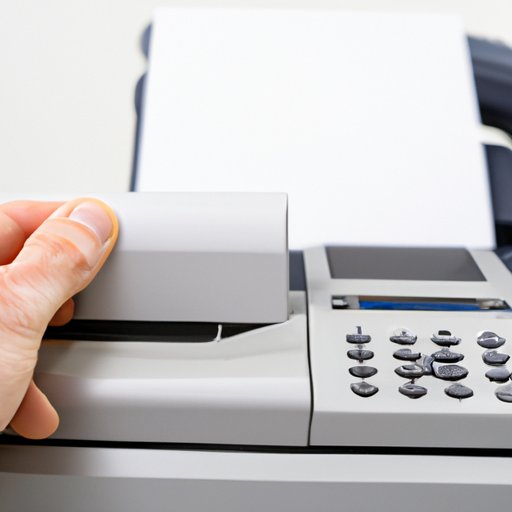Introduction
A fax machine is a device used for transmitting written documents over telephone lines. It works by converting the text or images into electrical signals that can be transmitted over phone lines. The recipient’s fax machine then converts the signals back into a readable format. Fax machines are still in use today, although they have been largely replaced by digital technologies such as email and online file-sharing services.
This article will provide a comprehensive guide on how does a fax machine work. It will cover the step-by-step process of sending and receiving a fax, the technology behind fax machines, the pros and cons of using one, and tips for troubleshooting common problems.
A Step-by-Step Guide on How to Use a Fax Machine
Using a fax machine is relatively straightforward. Here is a step-by-step guide on how to use a fax machine:
Setting Up the Fax Machine
The first step is to set up the fax machine. This involves connecting the machine to a power source and a telephone line. You should also make sure that the paper and toner cartridges are installed correctly. Once the machine is set up, you can begin using it.
Sending a Fax
To send a fax, you will need to place the document you want to send into the machine. Most modern machines come with an automatic document feeder (ADF) which allows you to insert multiple pages at once. Once the document is loaded, enter the recipient’s fax number and press the “send” button.
The machine will then dial the recipient’s number and start transmitting the document. Once the transmission is complete, the machine will print out a confirmation page indicating whether the transmission was successful or not.
Receiving a Fax
To receive a fax, you will need to make sure the machine is turned on and connected to a telephone line. When someone sends a fax to your number, the machine will automatically answer the call and start receiving the document. Once the transmission is complete, the machine will print out a confirmation page indicating whether the transmission was successful or not.
A Comprehensive Overview of the Technology Behind Fax Machines
Fax machines use a combination of analog and digital technology to transmit documents. An analog signal is a continuous waveform that can be used to transmit audio or video information. A digital signal is a series of discrete pulses that can be used to represent data.
Fax machines use both analog and digital signals to transmit documents. The analog signal is used to transmit the image of the document, while the digital signal is used to transmit the text of the document. The machine then converts these signals back into a readable format at the other end.
The different components of a fax machine include a modem, a printer, a scanner, and a telephone line. The modem is responsible for converting the analog and digital signals into a format that can be transmitted over the telephone line. The printer prints out the received document. The scanner scans the document to be sent. And the telephone line connects the fax machine to the recipient’s machine.
There are two main types of fax machines: analog and digital. Analog fax machines use analog signals to transmit documents, while digital fax machines use digital signals. Digital fax machines are faster and more reliable than analog fax machines, but they are also more expensive.

Pros and Cons of Using a Fax Machine
Fax machines have their advantages and disadvantages. On the plus side, fax machines are fast and reliable, and they allow users to send large documents quickly and easily. They are also secure, as the documents are encrypted during transmission.
On the downside, fax machines require a dedicated telephone line, and they can be expensive to maintain. In addition, they are becoming increasingly obsolete as digital technologies such as email and online file-sharing services become more popular.

An Overview of the Different Types of Fax Machines
There are several different types of fax machines available today. Traditional fax machines are stand-alone devices that connect to a telephone line. Digital faxing solutions are software-based systems that allow users to send and receive faxes through their computer or mobile device.
Many companies now offer cloud-based faxing solutions, which allow users to send and receive faxes without the need for a dedicated telephone line. These solutions are usually subscription-based and offer a range of features, such as the ability to track and store faxes in the cloud.

Tips for Troubleshooting Common Problems with Fax Machines
If you are having problems with your fax machine, there are a few steps you can take to try and resolve the issue. Here are some general troubleshooting tips:
- Make sure the machine is plugged in and that it is connected to a working telephone line.
- Check the settings of the machine and make sure they are correct.
- Make sure the paper and toner cartridges are installed correctly.
- Contact the manufacturer if you are still having problems.
Some of the most common issues with fax machines include:
- Outgoing transmissions failing due to poor line quality
- Incoming transmissions failing due to wrong settings
- Printouts coming out blank or distorted
- Machine not responding to commands
Conclusion
This article has provided a comprehensive guide on how does a fax machine work. It has covered the step-by-step process of sending and receiving a fax, the technology behind fax machines, the pros and cons of using one, and tips for troubleshooting common problems.
Overall, fax machines are still a useful tool for sending documents quickly and securely. However, they are becoming increasingly obsolete as digital technologies such as email and online file-sharing services become more popular. So if you are considering using a fax machine, it is important to weigh the advantages and disadvantages before making your decision.
(Note: Is this article not meeting your expectations? Do you have knowledge or insights to share? Unlock new opportunities and expand your reach by joining our authors team. Click Registration to join us and share your expertise with our readers.)
